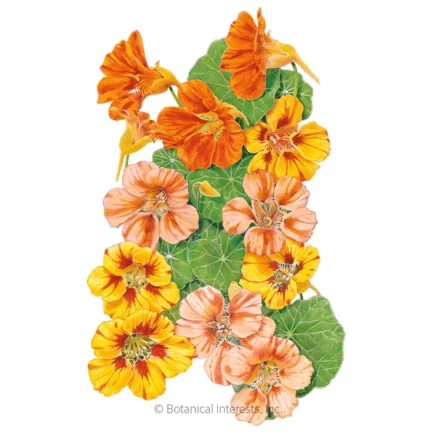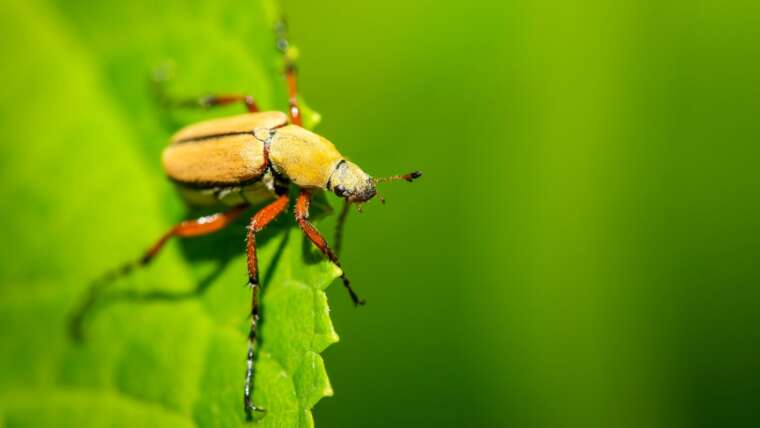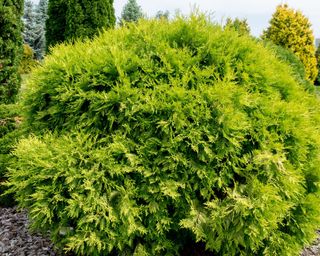One of the prettiest, brightest, and easiest-to-grow workhorses of the annual garden is the nasturtium. I always have extra trays of seedlings around and plug them in wherever possible.
Some radishes didn’t germinate? Replace them with nasturtium. Voles sucked some eggplant seedlings down into their tunnel? Fill in the gaps with nasturtium. Chefs looking to purchase edible flowers? Nasturtium!
We all know nasturtium flowers are important in the garden, but do they keep bugs away? Let’s get into the multiple uses of nasturtium and how it can help you repel pests.
Fiesta Blend Nasturtium
Alaska Variegated Nasturtium

Single Blend Trailing Nasturtium

The Short Answer
The short answer is yes. Nasturtiums can repel pests like cabbage loopers, aphids, whiteflies, squash bugs, and certain beetles. They may deter mosquitoes with their spicy scent.
However, some bugs are attracted to nasturtiums. This allows you to use them as a trap crop to lure them away from your more desirable plants.
Let’s dive in so we can try to understand more.
The Long Answer
 With their large, easily sown seeds, nasturtiums are a companion and ornamental favorite.
With their large, easily sown seeds, nasturtiums are a companion and ornamental favorite.
Nasturtiums are a popular flower that gardeners and farmers plant along borders, in between rows, and as pops of colors along shrubs and tree lines. The seeds are large and easy to sow. They have great germination and growth rates. They don’t require much care, which is a huge benefit for a busy gardener!
As if we didn’t love them already, their scent and flavor deter certain pests, repel others, and attract beneficials. It can be a little tricky to know where to plant nasturtium to take advantage of their garden companionship. Plant it near the right crops, and it’s a match made in heaven. Plant it near the wrong crops, and you might be fighting your decision all season.
Why Nasturtiums Make Great Companions
 It’s important to choose the appropriate type of nasturtium based on your specific needs.
It’s important to choose the appropriate type of nasturtium based on your specific needs.
Nasturtiums not only look and taste great, they are multi-purpose in the garden. They can:
- Repel pests and sometimes confuse them
- Work as an effective trap crop by drawing pests away from cash crops
- Attract beneficial insects that, in turn, take care of the bad pests for you
- Help suppress weeds as an understory plant
- Fill in empty spaces and help with soil erosion
Be sure you select the right type of nasturtium to grow for your garden needs. Choose a trailing type if you plan to grow them in hanging baskets or along a fence, or a compact bush type for borders, intercropped, or in mass. Select colors that work for your design.
Keep in mind nasturtium prefers moist and low-fertilized soil so crops that prefer it dry may not make the best garden mates.
Use Them to Attract the Good Bugs
Nasturtiums repel pests, but they also attract good bugs that can benefit your garden by providing natural pest control.
Beneficial Insects
 In your garden, nasturtiums function as a crucial habitat for beneficial insects.
In your garden, nasturtiums function as a crucial habitat for beneficial insects.
Nasturtiums attract and serve as an important attractant for insects you want in your garden, like ladybugs, hoverflies, and lacewings. They all effectively manage populations of aphids and other pests you don’t want hanging out.
For example, an important natural enemy of whiteflies is the larvae of lacewings. Lacewing adults are highly attracted to nasturtiums, and the plant is a likely place they’ll lay their eggs. Plant nasturtium near your eggplant and peppers to keep whitefly populations in check.
While planting a bug attractant in your garden seems counterintuitive, this beautiful companion plant assists you in balancing the ecosystem in a natural way.
Use Them as a Trap Crop
Trap crops are more attractive and delicious to a pest than your other crops. They will lure in the bugs and then be sacrificed. More trap crops can be planted in their place for continuous pest control.
Nasturtium, as a strongly-scented herb, is highly attractive to some common pests. Sow trays of nasturtiums throughout the year so you always have a constant supply of a natural trap for pests.
Aphids
 Utilizing nasturtium as a trap crop proves successful in deterring aphids.
Utilizing nasturtium as a trap crop proves successful in deterring aphids.
Not all aphid types are attracted to nasturtium, but if you grow crops like lettuce, kale, cabbage, or roses, this plant will lure them away. Plant nasturtium about six feet away from the crops you want to protect. Don’t go any closer, or they’ll simply hop back over to the good stuff.
Melon, green peach, and potato aphids should successfully be deterred. Nasturtium will serve as an effective trap crop.
Borers
 To ensure the well-being of our diverse fruit crops, it’s crucial to prevent borers.
To ensure the well-being of our diverse fruit crops, it’s crucial to prevent borers.
Keeping borers away is important for those of us growing various fruits. Add nasturtiums all around the base of fruit trees to help maintain moisture and suppress weeds. They’ll stay just low enough to the ground that any pests attracted will remain there instead of jumping to the trees.
Flea Beetles
 Studies indicate that nasturtium is a more effective trap crop in spring.
Studies indicate that nasturtium is a more effective trap crop in spring.
Similar to aphids, flea beetles love nasturtiums, so planting them five to six feet away from crops like broccoli, kale, cabbage, and lettuce will keep or at least delay them going after the cash crops, flocking to the nasturtium instead.
Pro tip: Cover newly transplanted brassicas with insect netting or row cover in the early spring when flea beetles are most prevalent. As they mature, they’ll be more able to fend off pests, and you can remove the covering as they grow. Studies show nasturtium to be a more effective trap crop, decreasing damage to important leafy greens in the spring versus fall.
Use Them to Repel Pests
Nasturtium can also be intercropped with other crops to repel certain pests. Nasturtiums contain a chemical compound that gives them their peppery aroma and flavor. This serves as a non-hazardous way to control pests by turning many insects off. Here are a few that will fly right by if they smell nasturtiums.
Cucumber Beetles
 These beetles appear to be somewhat deterred by the peppery scent emitted by nasturtium.
These beetles appear to be somewhat deterred by the peppery scent emitted by nasturtium.
These destructive beetles will go after squash, cucumbers, winter squash, pumpkins, watermelon, and more. If populations aren’t controlled, they’ll stick around all season, creating new generations. They’ll hibernate in the soil and garden debris, emerging right around the time your summer garden is ready to pop with their favorite host plants to feed on.
The good news is that the peppery fragrance of nasturtiums repels these pests. Try planting a vining nasturtium variety in between rows to confuse the beetles.
Squash Bugs
 Planting nasturtiums around your summer and winter squash serves as a deterrent for squash bugs.
Planting nasturtiums around your summer and winter squash serves as a deterrent for squash bugs.
Companion planting nasturtiums around your summer and winter squash will deter squash bugs from landing on them and laying their eggs.
Cabbage Loopers
 Strategically plant nasturtium with its spicy scent in your annual vegetable garden.
Strategically plant nasturtium with its spicy scent in your annual vegetable garden.
This is the arch nemesis of late summer and fall gardens, seemingly coming out of nowhere to rapidly destroy a patch of kale, collards, and any other cruciferous vegetables you have growing.
The spicy scent of nasturtium planted sporadically through your annual veggie garden or right alongside them will help repel these pests.
Cabbage Worms
 These worms have the ability to consume entire leaves from your plants.
These worms have the ability to consume entire leaves from your plants.
Cabbage worms can devour entire leaves off your plants overnight and move on to the next. If you’re not careful, you could lose all your leafy greens.
Pro tip: Select purple kales as the bright green worms stand out clearly on the leaves, making them easier to spot and destroy.
Nasturtiums repel adult cabbage worms. Once nasturtium plants are mature, they bounce back fairly quickly from damage from any larvae who do find their way onto the plants.
Mexican Bean Beetle
 Trailing nasturtium varieties can be grown in between the bean vines.
Trailing nasturtium varieties can be grown in between the bean vines.
Interplanting compact nasturtium varieties at the base of pole beans or trailing varieties to grow up and in between bean vines may help repel Mexican bean beetle pests.
Mosquitoes
 Nasturtiums emit a potent scent believed to both bewilder and deter mosquitoes.
Nasturtiums emit a potent scent believed to both bewilder and deter mosquitoes.
The strong aroma put off by nasturtiums is thought to confuse and repel mosquitoes. Plant nasturtium in pots and place them around any outdoor seating area for a more pleasant, bite-free environment.
Colorado Potato Beetles
 The spicy scent of nasturtiums appears to perplex the Colorado Potato Beetle.
The spicy scent of nasturtiums appears to perplex the Colorado Potato Beetle.
The Colorado Potato Beetle (CPB) seems to be confused by nasturtiums. The spicy fragrance of the nasturtiums throws off their sense of smell, taking away their ability to effectively find the plants they want to feed on, so they simply fly away.
Though potatoes are their host of choice, they can also be found feeding on tomatoes, eggplant, and various weeds. Check the undersides of solanaceous crops for their eggs.
Plant Nasturtiums Near, But Away From These Crops
 Companion planting is a scientifically supported gardening strategy with proven advantages.
Companion planting is a scientifically supported gardening strategy with proven advantages.
Companion planting isn’t just a fad. It’s a scientifically backed gardening hack with proven benefits! The following crops benefit from having nasturtium planted nearby but not right next to them:
- Beans: to repel the Mexican bean beetle
- Large brassicas like cabbage/Brussels sprouts: Plant nasturtium at the base to help them retain moisture.
- Pumpkins: to increase pollination and deter squash bugs and cucumber beetles.
- Peppers and tomatoes: May deter the tomato and tobacco hornworm from laying eggs on them.
- Apple and other fruit trees: to keep borer pressure down
- Parsley and chives: make good general companions when grown in pots. Attracts pollinators.
- Cucurbits: Space plants out enough to avoid intense resource competition so the aphids and flea beetles that are drawn in don’t immediately hop over to your cucumbers. This may work especially well on trellised cucumbers and squash.
Don’t Plant Nasturtiums Near These Crops
 When planning your garden, it’s important to consider that not all garden counterparts get along.
When planning your garden, it’s important to consider that not all garden counterparts get along.
Not all humans get along with one another, so we can only expect the same of our garden counterparts. Here are some of those crops to keep in mind when planning your garden:
- Leafy greens and smaller brassicas require the same nutrients as nasturtium, so they’ll constantly be competing for resources.
- Rosemary and sage prefer the soil to be drier, so nasturtiums won’t do well near them.
- Zucchini, summer squash, and cucumbers also prefer the soil to be on the drier side. Since nasturtiums attract cucumber beetles, try planting a row of them near your squash and cucumbers or placing them in grow bags at the corners of your garden plot at a safe distance.
Key Takeaways
- Nasturtiums are multi-purpose.
- When using them as a trap crop, plant them a distance away. Otherwise, they will be ineffective in deterring the pests.
- Keep in mind soil, water, and sun requirements and plant nasturtium with like-minded crops.
- Select the right nasturtium for your garden needs.
Final Thoughts
Nasturtiums, simply put, are a beautiful and low-maintenance garden workhorse. Their peppery fragrance is known both to attract and deter certain pests and, when used properly, can help balance your backyard ecosystem.




